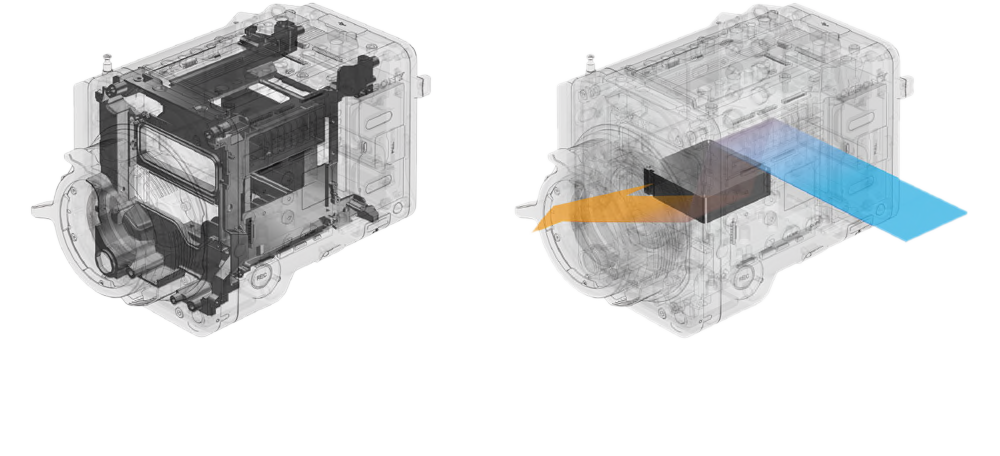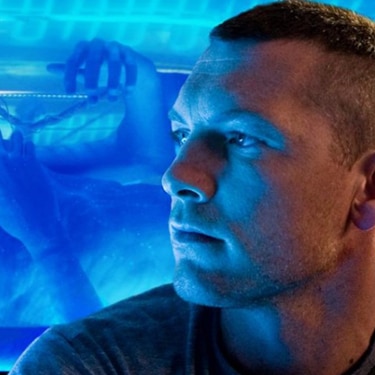VENICE: The Inside Story
Interview with the developers.

A uniquely cinematic look
VENICE is a very different kind of camera for Sony: everything from its name through to an all-new compact chassis and that uniquely cinematic look. Sony has been part of digital cinematography from its modern-day beginning, collaborating with George Lucas on his digital vision for Star Wars prequels. Early test shoots adapted existing Sony cameras such as the HDC-950P, but dedicated cameras such as the Academy Award-winning F900 soon followed, as well as the CineAlta brand itself. Each new camera generation has advanced imaging performance and features, but what’s remarkable is how the look of the cameras has evolved to be smaller and simpler — closer to traditional film cameras. VENICE represents the zenith of this evolution of technology and design. For this interview we spoke to: Product Planner Yutaka Okahashi, Project Leader Yuji Ooba, Designer Shinsaku Hirano, Mechanical Engineer Koji Izumi.

Okahashi: Initial development began in early 2015 and was formally initiated a few months later. Full-scale development started in April 2016.
Okahashi: VENICE is totally different from earlier CineAlta models, so looking back on the project I have to say there wasn’t anything that wasn’t demanding! Probably the most challenging element was the camera’s mechanical design, as it was totally different from Sony’s normal design philosophy. Some products have a very clear outline right from the start. VENICE was different: everything from the shape of the chassis, to the interior layout, to the performance specifications changed during development. It seemed that the further we got into the project, the more we learned what VENICE could be, and the engineers never gave up trying to achieve this vision. Whenever we felt we could deliver more by updating the original design, that’s what we did.
Okahashi: The magic of this camera has been called “color science,” but it’s more than science, more than simply numbers; it’s a filmic look that evokes an emotional response from the viewer. So it seemed right to move away from product numbers and have a real name for this camera. VENICE was taken from Venice Beach in Los Angeles. Venice, Italy, is also a city well known for films. So when we began thinking about using a proper name, many alternate names were considered, but this was the one that worked best.

Can you provide background on the 6K Full-Frame sensor?
Ooba: There were many, many factors we considered when choosing VENICE’s sensor design — we didn’t want to simply iterate on what we had before, we went back to basics and conducted many conversations with customers. We came to see a product concept that would offer exceptional imaging performance for a broad range of cinematography applications, not just one or two. VENICE’s Full-Frame sensor can support virtually any aspect ratio permutation within Full-Frame and Super 35: widescreen spherical, widescreen anamorphic, 2.39:1, 1.85:1, 17:9. This means you can shoot with any cine or stills lens ever created. That’s special. Of course, Sony’s α still cameras also use 6K Full-Frame sensors, so it might seem like there’s some similarity in design. In fact, VENICE’s sensor is an all-new design, 36 x 24 mm, developed exclusively for filming cinema films.

How does VENICE offer both PL and E-mount?
Izumi: Once VENICE settled on a Full-Frame sensor, we knew we needed to support the widest possible choice of lenses. There were a number of options, but we got a very clear understanding from customers of the need for simplicity and robustness, above all. To switch to E-mount, all you need is a screwdriver to remove the 6 screws that secure it, and reveal the E-mount. That’s it. Very simple and straightforward for anyone to perform on-set. The E-mount itself uses the FS7 II design with a lever lock to provide robustness and security.
Why was the 8 position ND filter developed?
Ooba: People ask why we didn’t use the electronic variable ND filter from FS5 and FS7 II. We considered this option, of course, but from discussions with customers, we knew that when filming cinema films, ND adjustments are made in steps, so this meant we had to develop something new for VENICE.
Izumi: Two filters were necessary to create a glass filter from 0.3 (1/2) to 2.4 (1/256), and we had a hard time figuring out how to fit it in a 0.71-inch flange back. By consulting across Sony, we found a variety of advanced miniaturization technologies and we were able to make it fit.

How did you engineer VENICE's robustness?
Izumi: We considered every detail! For example, most cameras are designed with the intake and exhaust ports on the top and bottom of the camera, but if it rains while filming, water enters the camera through them. For VENICE, the intake vent is located on the left and the exhaust vent is on the right. By separating the ventilation flow path from the electronic components, the camera’s operation is not affected, even if water enters the intake and exhaust ports. That was our theory, but we also conducted tests with VENICE in harsh conditions and found that there were no problems with its operation, even under extreme circumstances.
We also designed VENICE with on-set maintenance in mind. We knew that it’s easy for the fans to get dirty when shooting in harsh conditions, so on VENICE they can be changed very easily. Once the sensor module is removed, the fan can be extracted as simply as opening a drawer. As long as the customer is willing to accept the appropriate responsibility, the entire task can be done in a matter of minutes.
Hirano: We also decided to reflect this interior robustness with VENICE’s external design: adopting a new utilitarian gray color with a distinctly bumpy texture on the magnesium chassis. We wanted VENICE to look, and even feel, in way that made its robustness quite obvious. It’s a small camera, but it’s tough enough for almost any mainstream cinematography application.

From discussions with customers, we knew that when filming cinema films, ND adjustments are made in steps, so this meant we had to develop something new for VENICE.
Yuji Ooba
Project Leader
How important was ease of use?
Okahashi: Time is a lot of money on a film set. Superb imaging performance is of limited value if set-up time is too long, so this was a big focus for the team. We listened to customers on how they preferred to work and the number of buttons, layout and menu composition. We reduced the number of external buttons to 14 to achieve a more intuitive approach to operating the camera. A lot of time was spent tuning the controls to meet an operator’s needs; all the necessary functions in just the right places, paring away anything unnecessary that might interfere in an instinctive user experience. The same user-focused approach was applied to the menu control interface. During normal use, there’s a simple interface providing quick access to all the key features, but it’s still possible to access a layer of more detailed controls to make more sophisticated adjustments. In fact, the VENICE team called on a UI expert from outside of the professional group to provide a fresh approach. He spent a great deal of time with customers, analyzing their usability requirements with paper outlines, often in private sessions at cinematography events. It’s one more reason to visit the Sony booth — being consulted on our next-generation cameras!
Ooba: This camera is often used with camera assistants, so we took care to meet their needs, with the main display on the side to increase the operability for them.
Izumi: One example of how VENICE’s design evolution offered new functionality is that when a space became available on top of the camera, we immediately started thinking about how to use it. After much consideration, we decided to attach a slide rail to the top of the body. Doing so allowed independent movement of the handle and viewfinder stay. The viewfinder can also be rotated 90°, making it useful in locations where it is hard to see through the viewfinder, like when you’re against a wall or in a car. We also considered the position of the terminal so the cables do not get in the way of the bottom space, allowing trouble-free panel operation and a sense of compactness when operating the camera, even if many cables are inserted.
We changed the characteristics of the optical low pass filter and color expression to achieve this cinematic look as default.
Yuji Ooba
Project Leader

What's different about VENICE's imaging quality?
Ooba: The optical system on previous CineAlta cameras delivered very crisp and sharp imaging. It’s a popular approach and many users prefer it, but there are also people who prefer images with a soft tone and believe this is more cinematic. While earlier cameras such as the F55 can be configured to deliver this type of cinematic imaging, with VENICE we changed the characteristics of the optical low pass filter and color expression to achieve this cinematic look as a default. This was one of the main goals in terms of image generation this time around.
Ooba: VENICE’s Full-Frame sensor can cut out S35-size imagery, and its size and resolution is nearly the same as F55, but the electronic storage capacity is several times larger than them. In fact, we’ve got more natural noise, and better latitude.
Ooba: We adjusted sensor color to provide superior color reproduction compared to F65/F55. Depth of color is affected by noise, so better noise contributes to better color science. One key learning was how cinematographers use lighting on set — exceptional sensitivity is a great feature on a stills camera, but much less important on VENICE. In fact, picking up stray light from a smartphone can cause a significant problem. Knowing this, we tuned the sensor accordingly. For monitoring, we provided a look, s709, that emulated film color, in addition to our existing realistic color reproduction.
Okahashi: At the time of launch, we set out a firmware roadmap with a clear schedule. We also paid close to attention to customer feedback since the launch to bring features forward wherever possible. We knew from F55 — currently on version 9 firmware — that adding features is crucial. VENICE is designed to support this. Additionally, we just announced High Frame Rate support in the future. Using the VENICE platform, we would like to add strong features step by step.

Okahashi: Image quality, of course. Especially 4K images resized from Full-Frame scanned signals; they are really awesome picture quality. Also, I have to say that a great deal of effort went into delivering a better menu interface. We still have room to improve there, but delivering superior imaging performance in concert with intuitive operation were our overriding design goals.
Okahashi: All of us on the team are most looking forward to seeing feature films shot with VENICE. Each new production is so exciting to us right now.



